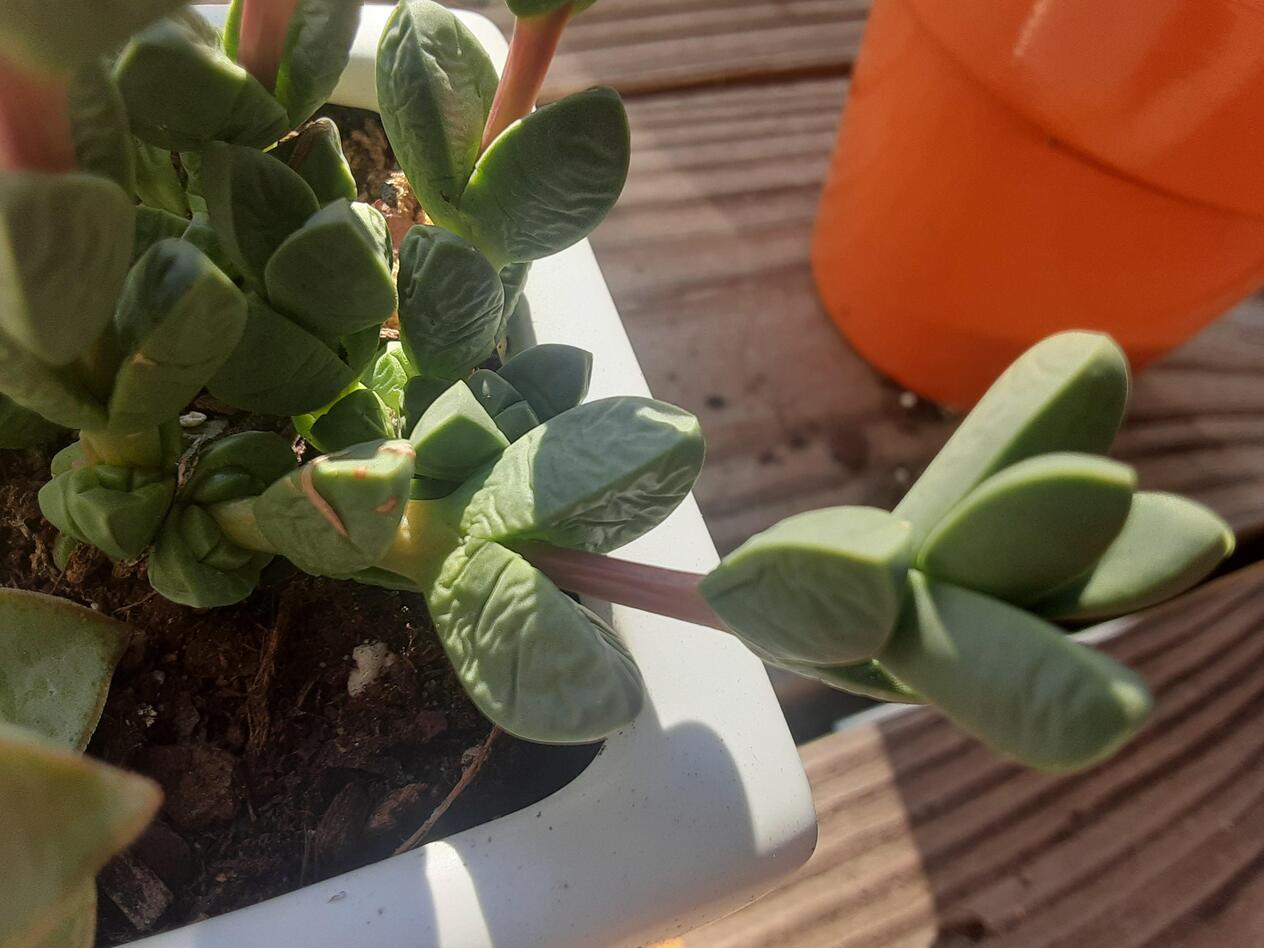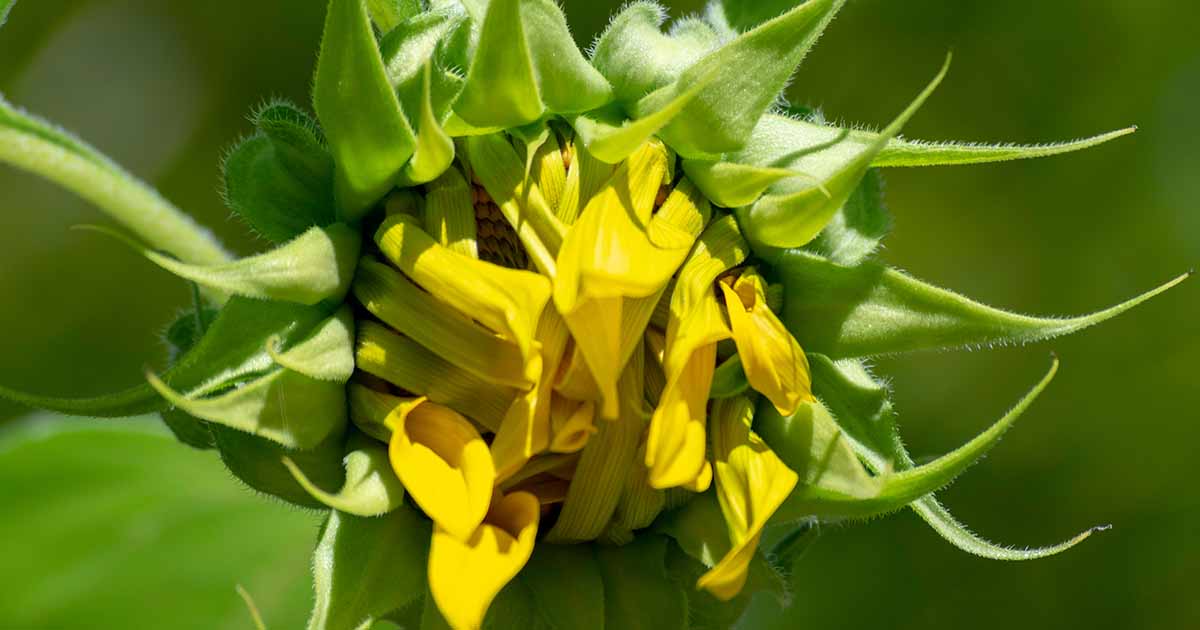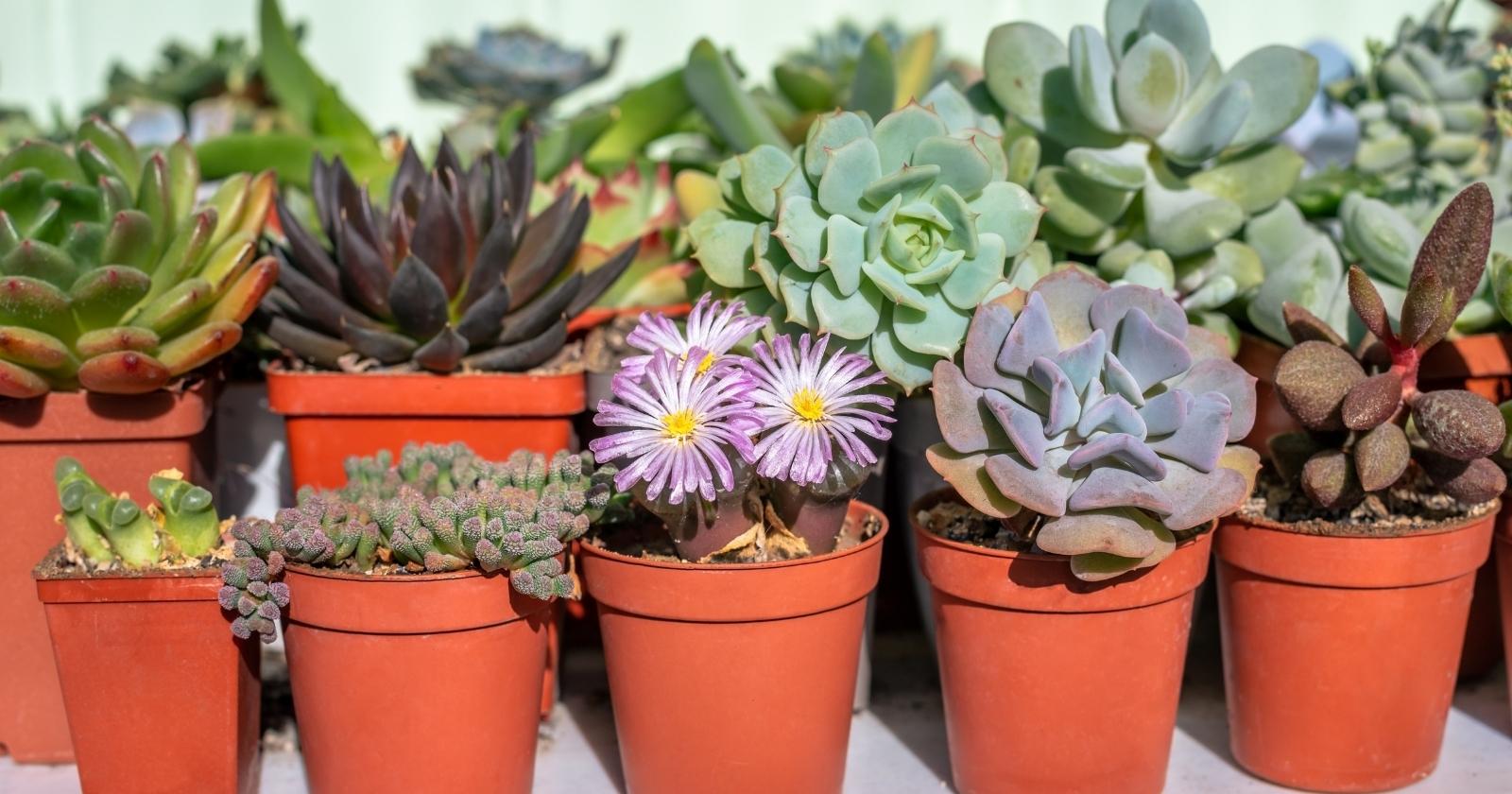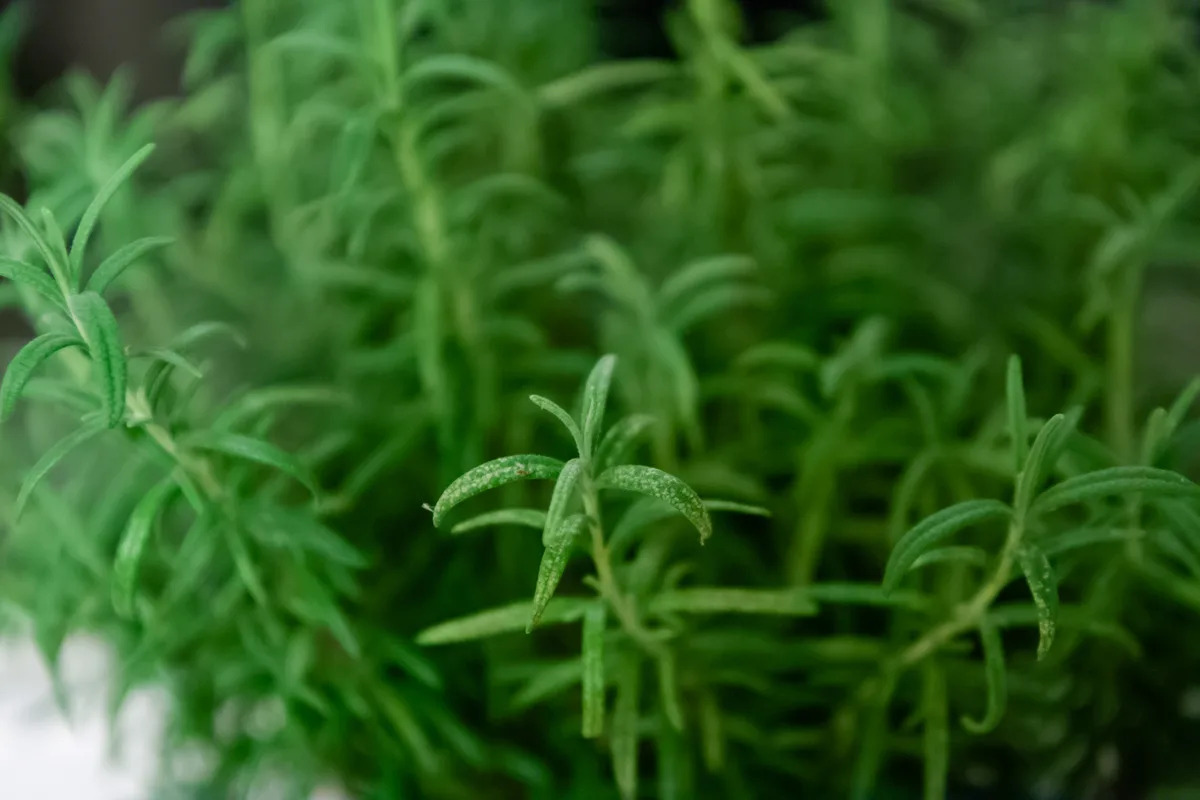Home>Types of Gardening>Ornamental Gardening>Why Are My Succulents Wrinkly


Ornamental Gardening
Why Are My Succulents Wrinkly
Published: December 28, 2023
Discover the reasons behind your succulents' wrinkly appearance and learn essential care tips for healthy ornamental gardening. Explore solutions to revive your succulents' vitality.
(Many of the links in this article redirect to a specific reviewed product. Your purchase of these products through affiliate links helps to generate commission for Chicagolandgardening.com, at no extra cost. Learn more)
Table of Contents
**
Introduction
**
Succulents, with their striking appearance and low-maintenance nature, have become a popular choice for both indoor and outdoor gardens. These resilient plants are known for their ability to store water in their leaves, stems, and roots, making them well-suited to arid environments. However, despite their hardy reputation, succulents can sometimes develop a concerning symptom: wrinkled leaves. If you've found yourself wondering, "Why are my succulents wrinkly?" you're not alone. This article will delve into the various factors that can lead to wrinkly succulents and provide valuable insights on how to address this issue effectively.
Understanding the unique characteristics of succulents is crucial in deciphering the reasons behind their wrinkled appearance. These plants have evolved to thrive in environments with minimal water availability, leading to their distinct water storage mechanisms. As a result, they have specific care requirements that differ from those of traditional houseplants. By gaining a deeper understanding of succulents and their needs, you can better comprehend the potential causes of wrinkling and implement targeted solutions to restore your plants to their former vitality. Let's explore the common culprits behind wrinkly succulents and discover the steps you can take to rejuvenate these captivating plants.
Understanding Succulents
Succulents, encompassing a diverse array of plant species such as Echeveria, Aloe, and Haworthia, are renowned for their capacity to thrive in arid conditions by storing water in their fleshy leaves, stems, or roots. This unique adaptation allows them to endure prolonged periods of drought, making them an ideal choice for individuals seeking low-maintenance greenery. Their striking and often geometrically intricate forms have also contributed to their popularity as ornamental plants, adorning windowsills, terrariums, and gardens with their captivating presence.
One of the defining features of succulents is their ability to survive in environments where other plants would struggle to flourish. Their water-storing capabilities enable them to withstand dry spells, making them particularly well-suited to regions with limited rainfall. This resilience is a result of evolutionary adaptations that have equipped succulents with specialized tissues for water storage, such as the iconic swollen leaves of the Aloe vera plant or the plump, spherical bodies of certain cacti.
Understanding the unique physiology of succulents is essential for providing them with the appropriate care. Unlike many traditional houseplants, succulents are prone to issues related to overwatering rather than underwatering. Their preference for well-draining soil and infrequent but thorough watering reflects their natural habitat, where water is scarce and sporadic. By recognizing and respecting these inherent traits, gardeners can create an environment that promotes the flourishing of these remarkable plants.
Common Causes of Wrinkly Succulents
Wrinkly succulents can be indicative of various underlying issues, and identifying the root cause is essential for devising an effective remedy. Several factors can contribute to the shriveling or wrinkling of succulent leaves, signaling distress and prompting the need for intervention. By recognizing these common causes, you can take proactive measures to address the specific issue affecting your plants.
- Overwatering: One of the primary culprits behind wrinkly succulents is overwatering. Despite their water-storing abilities, succulents are susceptible to root rot and other complications when subjected to excessive moisture. When the soil remains consistently damp, the roots are unable to extract oxygen effectively, leading to deterioration and eventual desiccation of the leaves. Overwatering disrupts the delicate balance of water uptake and storage in succulents, resulting in a visibly wilted and wrinkled appearance.
- Underwatering: While succulents are renowned for their drought tolerance, insufficient watering can also lead to wrinkling. When deprived of adequate moisture, succulents mobilize their stored water reserves to sustain essential physiological processes, causing the leaves to appear deflated and creased. Inadequate watering can prompt succulents to enter a state of dormancy or conservation, manifesting as wrinkled or shriveled foliage as a survival mechanism.
- Sunburn: Excessive exposure to direct sunlight, particularly during the intense midday hours, can result in sunburn and subsequent wrinkling of succulent leaves. Sunburn manifests as discolored or translucent patches on the foliage, accompanied by a loss of turgidity and firmness. Prolonged exposure to harsh sunlight without adequate acclimatization can cause irreparable damage to the plant cells, leading to a visibly distressed and wrinkled appearance.
- Pests and Diseases: Infestations by pests such as aphids, mealybugs, or spider mites can compromise the health of succulents, causing them to exhibit symptoms such as leaf wrinkling, discoloration, and stunted growth. Additionally, fungal infections and bacterial diseases can impact the water regulation mechanisms of succulents, resulting in aberrations in leaf texture and overall vigor.
By familiarizing yourself with these common causes of wrinkly succulents, you can conduct a thorough assessment of your plants and implement targeted strategies to mitigate the specific issue at hand.
Overwatering
Overwatering is a prevalent issue that afflicts succulents and can precipitate the development of wrinkled, limp, or discolored foliage. Despite their water-storing capabilities, succulents are not impervious to the detrimental effects of excessive moisture. Overwatering disrupts the delicate equilibrium of water uptake and storage in succulents, impeding their ability to thrive and resulting in visible signs of distress.
When succulents are overwatered, the excess moisture saturates the soil, leading to a decline in oxygen availability to the roots. This impedes the process of respiration and nutrient uptake, culminating in the deterioration of the root system. As a consequence, the plant is unable to maintain turgidity and healthy foliage, leading to a wilted, wrinkled appearance. The accumulation of water in the soil fosters an environment conducive to the proliferation of root pathogens, further exacerbating the plant’s decline.
Over time, the impact of overwatering extends beyond the visible symptoms of wrinkled leaves, as the overall health and vigor of the succulent are compromised. The roots may become mushy, discolored, or foul-smelling, indicative of rot and decay. Addressing the effects of overwatering necessitates a multifaceted approach, encompassing both immediate remedial measures and long-term preventative strategies.
To rectify the consequences of overwatering, it is imperative to assess the extent of root damage and initiate remedial actions. This may involve carefully unpotting the succulent, examining the roots for signs of rot, and trimming away affected areas to promote regeneration. Repotting the succulent in well-draining soil and adjusting the watering regimen to align with the plant’s specific requirements is crucial for fostering recovery. Additionally, providing ample ventilation and ensuring proper light exposure can aid in the revival process.
Preventing the recurrence of overwatering entails cultivating a proactive approach to succulent care. Selecting pots with drainage holes, utilizing well-draining soil mixes, and adhering to a consistent watering schedule that allows the soil to dry out between waterings are fundamental practices for safeguarding succulents against the perils of overwatering. By cultivating an environment that supports optimal root health and hydration, succulents can thrive and exhibit their characteristic robustness and beauty.
Underwatering
While succulents are revered for their resilience in arid conditions, underwatering can precipitate distressing symptoms, including wrinkled or shriveled leaves. Contrary to the misconception that succulents thrive on neglect and minimal watering, these plants require adequate hydration to maintain their vitality and structural integrity. Underwatering can prompt succulents to initiate survival mechanisms that manifest as visible signs of desiccation and stress.
When succulents are deprived of sufficient moisture, they mobilize their stored water reserves to sustain essential physiological functions, leading to a depletion of moisture within the leaves, stems, and roots. As a result, the leaves may appear deflated, wrinkled, or puckered, signaling the plant’s response to water scarcity. This adaptive response serves as a mechanism for conserving resources and prolonging survival during periods of drought or inadequate watering.
Furthermore, prolonged periods of insufficient watering can induce succulents to enter a state of dormancy, wherein metabolic activity is subdued to mitigate water loss. This dormancy is reflected in the plant’s appearance, with the leaves assuming a desiccated and contracted aspect. While succulents are adept at enduring periods of water scarcity, chronic or severe underwatering can compromise their long-term health and impede their capacity for rejuvenation.
Reviving an underwatered succulent entails a gradual and strategic approach to rehydration. It is essential to administer water in a controlled manner, allowing the plant to gradually rehydrate without succumbing to the shock of sudden moisture influx. Thoroughly moistening the soil and ensuring adequate drainage are pivotal for facilitating the rehydration process while preventing the onset of complications such as root rot.
Preventing the recurrence of underwatering necessitates a nuanced understanding of the specific water requirements of different succulent species. By familiarizing oneself with the individual preferences of various succulents and tailoring the watering regimen accordingly, gardeners can safeguard their plants against the perils of dehydration. Observing the visual and tactile cues exhibited by succulents, such as leaf plumpness and soil moisture levels, is instrumental in gauging their hydration needs and preempting the onset of underwatering-related symptoms.
Sunburn
While succulents are renowned for their affinity for sunlight, prolonged or intense exposure to direct sun rays can lead to a phenomenon known as sunburn. This condition manifests as discolored, translucent, or brown patches on the leaves, accompanied by a loss of turgidity and firmness. Sunburn can result in the wrinkling or shriveling of succulent foliage, signaling the plant’s distress in response to excessive solar radiation.
When succulents are subjected to intense sunlight without adequate acclimatization, the plant cells may undergo photodamage, leading to a disruption of essential physiological processes. The excessive energy from sunlight can overwhelm the plant’s photosynthetic machinery, causing oxidative stress and impairing the structural integrity of the leaves. This can result in the manifestation of visible symptoms such as sunburn, wherein the affected areas exhibit signs of cellular damage and dehydration.
Furthermore, the impact of sunburn extends beyond superficial discoloration, as it can compromise the overall health and resilience of the succulent. Prolonged or recurrent sunburn can impede the plant’s capacity to photosynthesize effectively, leading to diminished growth and vitality. Additionally, the susceptibility to desiccation and environmental stressors may be heightened in sunburn-affected succulents, necessitating proactive measures to mitigate the repercussions of excessive sun exposure.
Addressing sunburn in succulents entails a multifaceted approach that encompasses both remedial and preventative strategies. If a succulent exhibits symptoms of sunburn, relocating it to a shadier or more sheltered location can prevent further photodamage and facilitate recovery. Providing adequate protection from intense midday sun, such as through the use of shade cloth or adjusting the positioning of outdoor plants, is crucial for safeguarding succulents against sunburn.
Preventing sunburn in succulents necessitates a proactive approach to sun exposure management. Gradually acclimating newly acquired or transplanted succulents to direct sunlight can bolster their resilience and minimize the risk of sunburn. Additionally, monitoring the intensity and duration of sunlight exposure, especially during periods of extreme heat or heightened solar radiation, is instrumental in preempting the onset of sunburn-related symptoms.
Pests and Diseases
Succulents, despite their reputation for resilience, are susceptible to infestations by pests and infections by diseases, both of which can contribute to the development of distressing symptoms such as wrinkled or discolored leaves. Common pests that pose a threat to succulents include aphids, mealybugs, spider mites, and scale insects, each of which can compromise the plant’s health and vigor. Additionally, fungal infections and bacterial diseases can disrupt the water regulation mechanisms of succulents, leading to aberrations in leaf texture and overall vitality.
Infestations by pests can manifest as visible signs of damage, including stippling, webbing, or the presence of tiny insects on the foliage. These pests feed on the plant’s sap, leading to a depletion of essential nutrients and moisture, resulting in symptoms such as leaf wrinkling, discoloration, and stunted growth. The detrimental impact of pest infestations extends beyond the immediate physical damage, as it can weaken the succulent’s defenses and render it more susceptible to secondary infections and environmental stressors.
Fungal infections, characterized by symptoms such as rot, lesions, or powdery mildew, can compromise the structural integrity of succulents, leading to visible manifestations of distress. The disruption of the plant’s water regulation mechanisms by fungal or bacterial pathogens can result in aberrations in leaf texture, wilting, and the development of wrinkled or distorted foliage.
Addressing pest infestations and diseases in succulents necessitates a proactive and targeted approach to pest management and plant health. Implementing cultural practices such as regular inspection of plants, maintaining optimal growing conditions, and promoting biodiversity in the garden can mitigate the risk of pest infestations and bolster the natural resilience of succulents.
If succulents are afflicted by pests or diseases, prompt intervention is crucial to prevent the escalation of the issue. This may involve the targeted application of horticultural oils, insecticidal soaps, or natural predators to combat pest infestations. Additionally, implementing appropriate sanitation measures, such as removing affected plant parts and minimizing favorable conditions for pathogen proliferation, is pivotal for curbing the spread of diseases within succulent populations.
By cultivating a vigilant and informed approach to succulent care, gardeners can safeguard their plants against the perils of pest infestations and diseases, promoting the continued vibrancy and beauty of these captivating ornamentals.
How to Revive Wrinkly Succulents
Reviving wrinkly succulents requires a comprehensive approach that addresses the underlying cause of the symptoms and implements targeted remedial measures to restore the plant’s vigor and appearance. Whether the wrinkling is attributed to overwatering, underwatering, sunburn, or pest infestations, proactive intervention can facilitate the rejuvenation of succulents, enabling them to regain their characteristic plumpness and resilience.
If overwatering is identified as the primary cause of wrinkling, immediate action is essential to mitigate the impact on the succulent’s health. Carefully unpotting the plant and inspecting the roots for signs of rot or decay is pivotal for assessing the extent of damage. Trimming away affected areas and allowing the roots to dry out before repotting the succulent in well-draining soil can promote recovery. Adjusting the watering regimen to align with the plant’s specific requirements and providing adequate ventilation and light exposure are instrumental in fostering the revival of overwatered succulents.
Conversely, if underwatering is deemed responsible for the succulent’s wrinkled appearance, gradual rehydration is imperative to prevent shock and facilitate recovery. Thoroughly moistening the soil and ensuring proper drainage can aid in reinvigorating the plant, allowing it to regain turgidity and vitality. Tailoring the watering schedule to accommodate the succulent’s hydration needs and monitoring its response to rehydration is crucial for promoting sustained recovery.
In the case of sunburn-affected succulents, relocating them to a shadier or more sheltered location can prevent further photodamage and facilitate healing. Providing protection from intense sunlight, such as through the use of shade cloth or adjusting the positioning of outdoor plants, is pivotal for safeguarding succulents against the repercussions of sunburn. Implementing gradual acclimatization to sunlight for newly acquired or transplanted succulents can enhance their resilience and minimize the risk of sunburn.
Addressing pest infestations and diseases in succulents necessitates a proactive and targeted approach to pest management and plant health. Implementing cultural practices such as regular inspection of plants, maintaining optimal growing conditions, and promoting biodiversity in the garden can mitigate the risk of pest infestations and bolster the natural resilience of succulents. If succulents are afflicted by pests or diseases, prompt intervention is crucial to prevent the escalation of the issue. This may involve the targeted application of horticultural oils, insecticidal soaps, or natural predators to combat pest infestations.
By cultivating a vigilant and informed approach to succulent care, gardeners can safeguard their plants against the perils of pest infestations and diseases, promoting the continued vibrancy and beauty of these captivating ornamentals.
Conclusion
In conclusion, the wrinkling of succulents serves as a visible indicator of underlying issues that necessitate prompt attention and targeted remediation. Whether stemming from overwatering, underwatering, sunburn, or pest infestations, the wrinkled appearance of succulents signifies their distress and prompts the need for proactive intervention. By understanding the specific causes of wrinkling and implementing tailored strategies for revival, gardeners can rejuvenate their succulents and restore them to their characteristic robustness and allure.
Embracing a proactive approach to succulent care, encompassing practices such as thorough assessment of watering needs, strategic sun exposure management, and vigilant pest monitoring, is pivotal for safeguarding these resilient plants against the perils that can lead to wrinkling. By cultivating an environment that aligns with the natural habitat of succulents and respects their unique physiological adaptations, gardeners can foster the flourishing of these captivating ornamentals.
Furthermore, the rejuvenation of wrinkly succulents necessitates a multifaceted approach that addresses the specific cause of the symptoms and implements targeted remedial measures. Whether rectifying overwatering, rehydrating underwatered plants, mitigating the impact of sunburn, or combatting pest infestations and diseases, proactive intervention can facilitate the revival of succulents, enabling them to regain their characteristic plumpness and resilience.
By integrating the insights and strategies presented in this article into succulent care practices, gardeners can navigate the challenges associated with wrinkly succulents with confidence and efficacy, fostering the continued vibrancy and beauty of these remarkable ornamentals. Through attentive and informed care, succulents can thrive, showcasing their captivating forms and enduring appeal as cherished additions to indoor and outdoor spaces.




